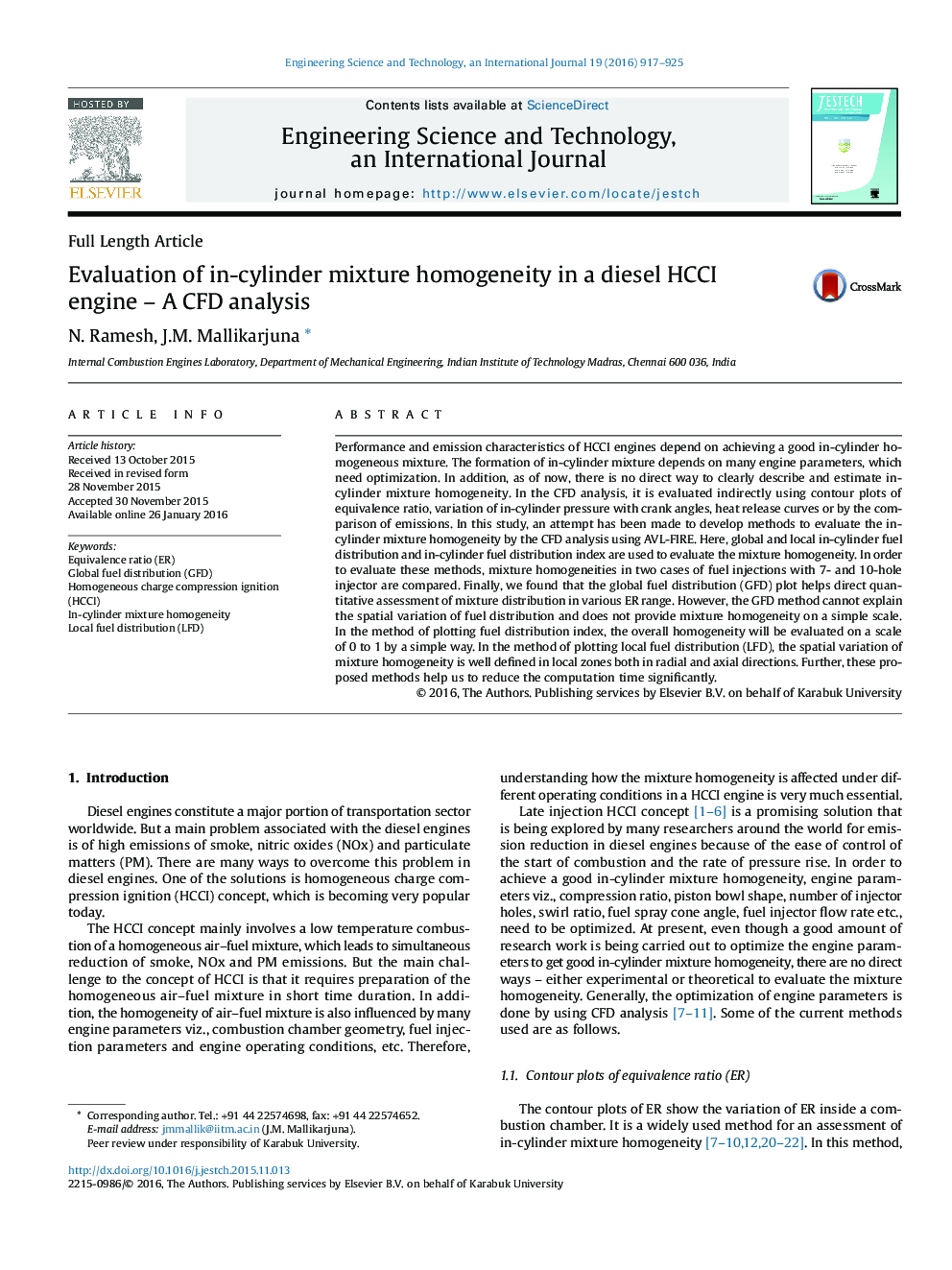| Article ID | Journal | Published Year | Pages | File Type |
|---|---|---|---|---|
| 477488 | Engineering Science and Technology, an International Journal | 2016 | 9 Pages |
Performance and emission characteristics of HCCI engines depend on achieving a good in-cylinder homogeneous mixture. The formation of in-cylinder mixture depends on many engine parameters, which need optimization. In addition, as of now, there is no direct way to clearly describe and estimate in-cylinder mixture homogeneity. In the CFD analysis, it is evaluated indirectly using contour plots of equivalence ratio, variation of in-cylinder pressure with crank angles, heat release curves or by the comparison of emissions. In this study, an attempt has been made to develop methods to evaluate the in-cylinder mixture homogeneity by the CFD analysis using AVL-FIRE. Here, global and local in-cylinder fuel distribution and in-cylinder fuel distribution index are used to evaluate the mixture homogeneity. In order to evaluate these methods, mixture homogeneities in two cases of fuel injections with 7- and 10-hole injector are compared. Finally, we found that the global fuel distribution (GFD) plot helps direct quantitative assessment of mixture distribution in various ER range. However, the GFD method cannot explain the spatial variation of fuel distribution and does not provide mixture homogeneity on a simple scale. In the method of plotting fuel distribution index, the overall homogeneity will be evaluated on a scale of 0 to 1 by a simple way. In the method of plotting local fuel distribution (LFD), the spatial variation of mixture homogeneity is well defined in local zones both in radial and axial directions. Further, these proposed methods help us to reduce the computation time significantly.
